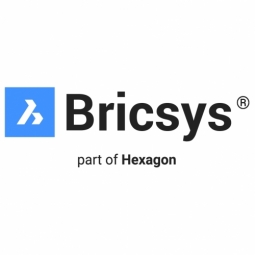技术
- 应用基础设施与中间件 - 中间件、SDK 和库
适用行业
- 水泥
适用功能
- 产品研发
用例
- 虚拟原型与产品测试
关于客户
SLIK Architekten GmbH 是一家位于瑞士苏黎世的中型建筑公司。该公司拥有强大的尖端建筑和城市设计项目组合。创始合伙人之一 Steffen Lemmerzahl 强调 3D 建模在建筑空间中日益重要。该公司的设计计划将送交房东、当局和建筑商批准。自成立以来,SLIK Architekten 一直使用 3D 模型来开发其设计。公司的工作流程要求他们能够持续访问自己的工作并控制有关软件更新的决策。
挑战
SLIK Architekten 是一家位于瑞士苏黎世的中型建筑公司,其之前由 Autodesk® 开发的 CAD 软件面临着挑战。该公司的工作流程要求他们无论身在何处都能持续访问自己的工作,并控制有关软件更新的决策。然而,Autodesk 许可模式最近的变化与 SLIK Architekten 的运营需求并不相符。该公司不能冒因软件公司所做的更改而失去对其主要工作的访问权限的风险。此外,他们需要一种能够与现有的不同软件包生态系统无缝集成的软件。
解决方案
SLIK Architekten 在 BricsCAD® 中找到了他们的解决方案,该软件为他们提供了所需的灵活性和可靠性。该公司使用 BricsCAD® 和 BricsCAD® BIM 永久网络许可证快速高效地创建建筑图纸。从 AutoCAD® 到 BricsCAD 的过渡非常简单,一个小团队负责处理库和模板的准备工作。 BricsCAD 与 AutoCAD® LT 并行部署,以确保在需要时可以使用后备选项。迁移很顺利,几乎不需要外部支持,团队依靠手册和论坛智慧。该公司现在使用 BricsCAD 作为创建建筑图纸和 3D 模型的主要工具。
运营影响

Case Study missing?
Start adding your own!
Register with your work email and create a new case study profile for your business.
相关案例.

Case Study
System 800xA at Indian Cement Plants
Chettinad Cement recognized that further efficiencies could be achieved in its cement manufacturing process. It looked to investing in comprehensive operational and control technologies to manage and derive productivity and energy efficiency gains from the assets on Line 2, their second plant in India.

Case Study
Digital Transformation of Atlanta Grout & Tile: An IoT Case Study
Atlanta Grout & Tile, a Tile, Stone & Grout restoration company based in Woodstock, Georgia, was facing challenges with its traditional business model. Despite steady growth over the years, the company was falling behind the web revolution and missing out on the opportunity to tap into a new consumer base. They were using independent software from different vendors for each of their department information and workforce management. This resulted in a lot of manual work on excel and the need to export/import data between different systems. This not only increased overhead costs but also slowed down their response to clients. The company also had to prepare numerous reports manually and lacked access to customer trends for effective business decision-making.

Case Study
Revolutionizing Construction Equipment Rental: A Case Study on ProsRent and ENO8
ProsRent, a startup that won the 'Best Financial Opportunity' and 'Best Pitch' at CodeLaunch 2016, aimed to revolutionize the way construction professionals source and rent heavy equipment. In the construction industry, project managers and contractors typically rent heavy equipment from supply companies. However, predicting inventory can be challenging, and finding the required equipment at the right time and place can be a hassle. If the preferred vendor doesn't have the required equipment, it results in wasted time and money in searching for it, often leading to higher costs due to non-preferred rates and increased delivery costs if the vendor is located far from the job site. Suppliers, on the other hand, desired access to a wider base of trusted renters that they didn't have to vet themselves and wanted to offer dynamic rental pricing based on demand and availability in their market. ProsRent's challenge was to produce a minimum viable product that was fast and first to market but also strong enough to engender loyalty and repeat business from the target market.

Case Study
AI-based Automation for Commercial Office HVAC: A Verdigris Case Study
Modern buildings are required to run longer hours, support a variety of end uses, and contribute to higher levels of economic productivity, leaving a thin margin for error. However, even the most advanced building and environmental control systems have failed to adequately support facilities and operations management. Buildings are often inefficient and the people using them are underserved. To meet occupant comfort and maintain cost and energy efficiency, a dynamic, AI-assisted approach is needed.

Case Study
Revamping EE's Legacy ERP: A Case Study on BT's Strategic Transformation
EE, even after its merger with BT, was operating its ERP estate on legacy infrastructure, hosted on the premises of a third-party supplier. This outdated system resulted in a volume-based operational model, higher time to market, longer delivery cycles, and unsatisfactory customer experience. BT recognized the need for a strategic transformation of these aging ERP systems and sought a partner who could proactively manage application services. The partner was also expected to handle development requirements associated with application management services, drive accountability, and ownership with a time and target-driven transformation of these services. BT's primary goals were to improve customer experience, reduce cycle time, and measure these improvements with precision.








